Italy: Florence Part 20 - The Opera del Duomo Museum
Aug 14, 2023 15:42:26 #
We had a guided tour of this fabulous museum which contained the original sculptures from The Duomo which have been replaced by incredible copies. No Gail in this set either - sorry!
The Museo dell'Opera del Duomo (Museum of the Works of the Cathedral) in Florence, Italy is a museum containing many of the original works of art created for Florence Cathedral, including the adjacent Florence Baptistery and Giotto's Campanile. Most of the exterior sculptures have been removed from these cathedral buildings, usually replaced by replica pieces, with the museum conserving the originals.
The museum is located just east of the Duomo, near its apse. It occupies the area where much of the sculpture it houses was originally carved, as well as pieces such as Michelangelo's David, which was commissioned for the cathedral (this is now in the Galleria dell'Accademia). It opened as a museum in 1891, and now houses what has been called "one of the world's most important collections of sculpture."
Between 2009 and 2015 the museum considerably expanded, taking over the adjacent old Teatro Nuovo ("New Theatre") building. This allowed the construction of large display frameworks copying the architecture of the cathedral, into which the museum's originals are placed at their appropriate positions.
As of April 2023, the director of the museum is Fr. Timothy Verdon, an American priest who has held the position since 2011.
Among the museum's holdings are Lorenzo Ghiberti's doors for the Baptistery of Florence Cathedral called the Gates of Paradise, the two cantorias, or singing-galleries, designed for the cathedral, one each by Luca della Robbia and Donatello. All these have been replaced by replicas at the cathedral.
The cathedral holds the originals of important early 15th-century sculptures for the exterior by Donatello (including the Zuccone), Ghiberti, Nanni di Banco, Nanni di Bartolo (il Rosso), Niccolò di Piero Lamberti and others.
The collection also includes The Deposition, a pietà sculpted by Michelangelo which he intended for his own tomb, and Donatello's wood Penitent Magdalene.
Although it was reported on August 6, 2013, that a tourist had accidentally snapped a finger off of a 14th-century statue of the Virgin Mary by Giovanni d'Ambrogio, the finger was from a later repair and not part of the original work.
The museum also has significant collections of paintings (mostly late medieval and Early Renaissance), illuminated manuscripts, textiles in the form of vestments, metalwork and church plate, micromosaics and reliquaries.
https://en.wikipedia.org/wiki/Museo_dell%27Opera_del_Duomo_%28Florence%29
A great article by Lourdes Flores, a Californian now living in Florence:
The Opera del Duomo, also known as the "OPA", is the the Cathedral Workshop or "works commission" and was founded by the Republic of Florence in 1296 to oversee the construction of the new Cathedral and its bell tower.
In 1436, the Cathedral was finally finished with the completion of Brunelleschi's dome and its consecration.
Since then, the main task for the Opera del Duomo has been to conserve these monuments - including the Baptistery of San Giovanni. In 1891, the Museum was founded to house the works of art which, through the course of the centuries, had been removed from the Duomo and the Baptistery.
The museum serves as a refuge from pollution for many of the outside sculptures of the cathedral.
The numbers give us just an “inkling” of what is really behind these monuments: 6,000 sq. mt of showroom space, over a 1000 years standing in Florence, more than 750 works of art, a little more than 720 years of service by the commission, set in 25 rooms with floor plan on 3 levels. The recent restructuring of the museum was organized so that the guest could live the past and the present of the cathedral exploring how it has changed over the years.
For the very first time, a spectacular new design hosts the museum's unique masterpieces in a setting reflecting the environment for which they were originally designed, creating a museum within a museum ...*
Even just the highlights of this museum could send you in an overdose of information, however this article tries to synthesis everything so you walk through the museum like a pro. The light and space are stunning.
You are immediately greeted by one of the colossal pieces of art that once graced the interior of the Baptistery. The main altar by Girolamo Ticciati (1676-1745) which was completed in 1732: Saint John in Glory and candle-bearing angels. It was taken out of the building so that the medieval altar could be restored to its original position.
Corridoio dell'Opera
Perhaps the profound importance the Cathedral had on the people of Florence is found written on this wall, naming but a few of the 1000’s of people who contributed to its building, growth, expansion, decoration and preservation, including architects, artists, musicians, humanists, artisans and workmen. As you walk by you will years worth of names who have worked in the duomo of Florence.
Galleria delle sculture
A church that had an abundance of sculpture decorations was a sign of wealth and God’s blessings, and the Sculpture Gallery testifies to Florence’s growing importance in being able to keep pace with the other monumental churches. Especially the cathedrals being built throughout Europe which boast a wide collection of many Gothic sculptures. In this room you can also admire the rarely seen reverse side of the Baptistery doors.
Salone del Paradiso
The name of this room comes from the literal recreation of the old cathedral facade and the baptistery. Coming out of the Sculpture Gallery you are faced with a life size model of the cathedrals first front face, aligning statues and artwork.
Following ancient tradition, Christians call the area between a baptistery and its related church a Paradiso (“Paradise”), evoking the joy of those who, after receiving baptism, cross that space to participate in the Eucharist for the first time.
As you walk around the museum and the upper floors you will be able to admire from all angles the carvings and sculptures. The central courtyard also displays Ghiberti's original Gates of Paradise from the Baptistery just recently restored and cleaned: these were the original doors facing the Duomo and can be admired in their magnificent golden splendor up close.
Sala della Maddalena
This room is aptly named after the principle work of art which is in the center of the room, fully protected after its restoration by a sealed case, Donatello’s Penitent Saint Mary Magdalene, an amazing and thought-provoking wooden sculpture.
Attached to this room is the Cappella delle Reliquie which highlights (just) a portion of the churches collection of relics consisting of more than six hundred pieces of various types. These objects where an important part of the devotional life of the church, especially in the early stages of its growth and their coffers were often elaborate and ornate.
Tribuna di Michelangelo
In a room of quiet isolation is Michelangelo's Pietà (begun around 1550) which once stood in the Duomo. It is widely believed that he intended it for his own tomb; the hooded figure of Nicodemus is often interpreted as a self-portrait. The damage to Christ's left leg and arm is believed to have been inflicted by Michelangelo himself in frustration at his failing skills.
he expert skill of a sculptor was to carve a statue that when seen from the ground, would appear “normal”. Many times the gazer can not even distinguish the adjustments & distortions the artist made so that the hand looked proportionate to the nose and to the foot - both seen at different heights and distances. The various windows on the first and second floors allows the viewer to examine these masterpieces looking for their perfections and imperfections.
Galleria del Campanile
This room holds some of the artwork from the bell tower, once again it is evident that sculpture was the means of communication with the sixteen larger-than-life statues and fifty-four reliefs.
The reliefs are shown in their original order, beginning on west front of the Bell Tower and moving to the south, the east, and finally the north. The hexagonal scenes of professional activities are arranged beneath the diamond-shaped ones that illustrate the “systems” structuring human life.***
Panels from the bell tower
Galleria della Cupola
Perhaps one of the more fascinating rooms in the museum centers on the architectural masterpiece of Brunelleschi, the Cupola. This room brings together the construction with a brief film, the tools “invented” for the purpose of reaching these once dizzying heights, designs of the decorations & windows that grace the interior, even three large tree trunks that are a subtle reminder of where the wooden beams came from to build this (almost) impossible dream: The Casentino Forests.
Sala delle Cantorie
Here you will find side by side two choir lofts that once stood in the Duomo: one sculpted by Luca della Robbia (1431-38), the other by Donatello (1433-39). This is a valuable opportunity to compare two of the great artists of the Renaissance: della Robbia's infants are smooth, their movements lyrical; Donatello's convey a more immediate vigor.
Sala del Coro Bandinelliano
This room is dedicated to Baccio Bandinelli, who was commissioned by Cosimo I de’Medici for his artistic skill with marble. He started in 1547 eighty-six reliefs, together with his assistants, to be used to decorate the choir enclosure. This room puts on display 24 of these panels, as well as a selection of vestments from the 16th, 17th and 18th centuries.
Galleria dei modelli
Just as the name suggests, this gallery houses the models submitted for the new façade. There are seven large wood models illustrating proposals for a Renaissance façade in place of the medieval one which was demolished in 1587. In addition, there are two paintings for the wedding of Grand Duke Ferdinand I to the French princess Christine of Lorraine, along with copies of three of the colossal statues that adorned the Duomo on that occasion.
https://www.visitflorence.com/florence-museums/opera-del-duomo.html
For narratives on Florence and additional images, please see my previous posts:
https://www.uglyhedgehog.com/t-780452-1.html
https://www.uglyhedgehog.com/t-780574-1.html#14042094
https://www.uglyhedgehog.com/t-780644-1.html
https://www.uglyhedgehog.com/t-780747-1.html#14046442
https://www.uglyhedgehog.com/t-780857-1.html
https://www.uglyhedgehog.com/t-781066-1.html#14052114
https://www.uglyhedgehog.com/t-781155-1.html
https://www.uglyhedgehog.com/t-781361-1.html
https://www.uglyhedgehog.com/t-781570-1.html#14062411
https://www.uglyhedgehog.com/t-781764-1.html#14066381
https://www.uglyhedgehog.com/t-781877-1.html#14068369
https://www.uglyhedgehog.com/t-781969-1.html#14070561
https://www.uglyhedgehog.com/t-782046-1.html#14072302
https://www.uglyhedgehog.com/t-782130-1.html#14073789
https://www.uglyhedgehog.com/t-782224-1.html
https://www.uglyhedgehog.com/t-782434-1.html#14079836
https://www.uglyhedgehog.com/t-782523-1.html#14081820
https://www.uglyhedgehog.com/t-782725-1.html
https://www.uglyhedgehog.com/t-782943-1.html#14090979
I hope you enjoy these!
Mark
The Museo dell'Opera del Duomo (Museum of the Works of the Cathedral) in Florence, Italy is a museum containing many of the original works of art created for Florence Cathedral, including the adjacent Florence Baptistery and Giotto's Campanile. Most of the exterior sculptures have been removed from these cathedral buildings, usually replaced by replica pieces, with the museum conserving the originals.
The museum is located just east of the Duomo, near its apse. It occupies the area where much of the sculpture it houses was originally carved, as well as pieces such as Michelangelo's David, which was commissioned for the cathedral (this is now in the Galleria dell'Accademia). It opened as a museum in 1891, and now houses what has been called "one of the world's most important collections of sculpture."
Between 2009 and 2015 the museum considerably expanded, taking over the adjacent old Teatro Nuovo ("New Theatre") building. This allowed the construction of large display frameworks copying the architecture of the cathedral, into which the museum's originals are placed at their appropriate positions.
As of April 2023, the director of the museum is Fr. Timothy Verdon, an American priest who has held the position since 2011.
Among the museum's holdings are Lorenzo Ghiberti's doors for the Baptistery of Florence Cathedral called the Gates of Paradise, the two cantorias, or singing-galleries, designed for the cathedral, one each by Luca della Robbia and Donatello. All these have been replaced by replicas at the cathedral.
The cathedral holds the originals of important early 15th-century sculptures for the exterior by Donatello (including the Zuccone), Ghiberti, Nanni di Banco, Nanni di Bartolo (il Rosso), Niccolò di Piero Lamberti and others.
The collection also includes The Deposition, a pietà sculpted by Michelangelo which he intended for his own tomb, and Donatello's wood Penitent Magdalene.
Although it was reported on August 6, 2013, that a tourist had accidentally snapped a finger off of a 14th-century statue of the Virgin Mary by Giovanni d'Ambrogio, the finger was from a later repair and not part of the original work.
The museum also has significant collections of paintings (mostly late medieval and Early Renaissance), illuminated manuscripts, textiles in the form of vestments, metalwork and church plate, micromosaics and reliquaries.
https://en.wikipedia.org/wiki/Museo_dell%27Opera_del_Duomo_%28Florence%29
A great article by Lourdes Flores, a Californian now living in Florence:
The Opera del Duomo, also known as the "OPA", is the the Cathedral Workshop or "works commission" and was founded by the Republic of Florence in 1296 to oversee the construction of the new Cathedral and its bell tower.
In 1436, the Cathedral was finally finished with the completion of Brunelleschi's dome and its consecration.
Since then, the main task for the Opera del Duomo has been to conserve these monuments - including the Baptistery of San Giovanni. In 1891, the Museum was founded to house the works of art which, through the course of the centuries, had been removed from the Duomo and the Baptistery.
The museum serves as a refuge from pollution for many of the outside sculptures of the cathedral.
The numbers give us just an “inkling” of what is really behind these monuments: 6,000 sq. mt of showroom space, over a 1000 years standing in Florence, more than 750 works of art, a little more than 720 years of service by the commission, set in 25 rooms with floor plan on 3 levels. The recent restructuring of the museum was organized so that the guest could live the past and the present of the cathedral exploring how it has changed over the years.
For the very first time, a spectacular new design hosts the museum's unique masterpieces in a setting reflecting the environment for which they were originally designed, creating a museum within a museum ...*
Even just the highlights of this museum could send you in an overdose of information, however this article tries to synthesis everything so you walk through the museum like a pro. The light and space are stunning.
You are immediately greeted by one of the colossal pieces of art that once graced the interior of the Baptistery. The main altar by Girolamo Ticciati (1676-1745) which was completed in 1732: Saint John in Glory and candle-bearing angels. It was taken out of the building so that the medieval altar could be restored to its original position.
Corridoio dell'Opera
Perhaps the profound importance the Cathedral had on the people of Florence is found written on this wall, naming but a few of the 1000’s of people who contributed to its building, growth, expansion, decoration and preservation, including architects, artists, musicians, humanists, artisans and workmen. As you walk by you will years worth of names who have worked in the duomo of Florence.
Galleria delle sculture
A church that had an abundance of sculpture decorations was a sign of wealth and God’s blessings, and the Sculpture Gallery testifies to Florence’s growing importance in being able to keep pace with the other monumental churches. Especially the cathedrals being built throughout Europe which boast a wide collection of many Gothic sculptures. In this room you can also admire the rarely seen reverse side of the Baptistery doors.
Salone del Paradiso
The name of this room comes from the literal recreation of the old cathedral facade and the baptistery. Coming out of the Sculpture Gallery you are faced with a life size model of the cathedrals first front face, aligning statues and artwork.
Following ancient tradition, Christians call the area between a baptistery and its related church a Paradiso (“Paradise”), evoking the joy of those who, after receiving baptism, cross that space to participate in the Eucharist for the first time.
As you walk around the museum and the upper floors you will be able to admire from all angles the carvings and sculptures. The central courtyard also displays Ghiberti's original Gates of Paradise from the Baptistery just recently restored and cleaned: these were the original doors facing the Duomo and can be admired in their magnificent golden splendor up close.
Sala della Maddalena
This room is aptly named after the principle work of art which is in the center of the room, fully protected after its restoration by a sealed case, Donatello’s Penitent Saint Mary Magdalene, an amazing and thought-provoking wooden sculpture.
Attached to this room is the Cappella delle Reliquie which highlights (just) a portion of the churches collection of relics consisting of more than six hundred pieces of various types. These objects where an important part of the devotional life of the church, especially in the early stages of its growth and their coffers were often elaborate and ornate.
Tribuna di Michelangelo
In a room of quiet isolation is Michelangelo's Pietà (begun around 1550) which once stood in the Duomo. It is widely believed that he intended it for his own tomb; the hooded figure of Nicodemus is often interpreted as a self-portrait. The damage to Christ's left leg and arm is believed to have been inflicted by Michelangelo himself in frustration at his failing skills.
he expert skill of a sculptor was to carve a statue that when seen from the ground, would appear “normal”. Many times the gazer can not even distinguish the adjustments & distortions the artist made so that the hand looked proportionate to the nose and to the foot - both seen at different heights and distances. The various windows on the first and second floors allows the viewer to examine these masterpieces looking for their perfections and imperfections.
Galleria del Campanile
This room holds some of the artwork from the bell tower, once again it is evident that sculpture was the means of communication with the sixteen larger-than-life statues and fifty-four reliefs.
The reliefs are shown in their original order, beginning on west front of the Bell Tower and moving to the south, the east, and finally the north. The hexagonal scenes of professional activities are arranged beneath the diamond-shaped ones that illustrate the “systems” structuring human life.***
Panels from the bell tower
Galleria della Cupola
Perhaps one of the more fascinating rooms in the museum centers on the architectural masterpiece of Brunelleschi, the Cupola. This room brings together the construction with a brief film, the tools “invented” for the purpose of reaching these once dizzying heights, designs of the decorations & windows that grace the interior, even three large tree trunks that are a subtle reminder of where the wooden beams came from to build this (almost) impossible dream: The Casentino Forests.
Sala delle Cantorie
Here you will find side by side two choir lofts that once stood in the Duomo: one sculpted by Luca della Robbia (1431-38), the other by Donatello (1433-39). This is a valuable opportunity to compare two of the great artists of the Renaissance: della Robbia's infants are smooth, their movements lyrical; Donatello's convey a more immediate vigor.
Sala del Coro Bandinelliano
This room is dedicated to Baccio Bandinelli, who was commissioned by Cosimo I de’Medici for his artistic skill with marble. He started in 1547 eighty-six reliefs, together with his assistants, to be used to decorate the choir enclosure. This room puts on display 24 of these panels, as well as a selection of vestments from the 16th, 17th and 18th centuries.
Galleria dei modelli
Just as the name suggests, this gallery houses the models submitted for the new façade. There are seven large wood models illustrating proposals for a Renaissance façade in place of the medieval one which was demolished in 1587. In addition, there are two paintings for the wedding of Grand Duke Ferdinand I to the French princess Christine of Lorraine, along with copies of three of the colossal statues that adorned the Duomo on that occasion.
https://www.visitflorence.com/florence-museums/opera-del-duomo.html
For narratives on Florence and additional images, please see my previous posts:
https://www.uglyhedgehog.com/t-780452-1.html
https://www.uglyhedgehog.com/t-780574-1.html#14042094
https://www.uglyhedgehog.com/t-780644-1.html
https://www.uglyhedgehog.com/t-780747-1.html#14046442
https://www.uglyhedgehog.com/t-780857-1.html
https://www.uglyhedgehog.com/t-781066-1.html#14052114
https://www.uglyhedgehog.com/t-781155-1.html
https://www.uglyhedgehog.com/t-781361-1.html
https://www.uglyhedgehog.com/t-781570-1.html#14062411
https://www.uglyhedgehog.com/t-781764-1.html#14066381
https://www.uglyhedgehog.com/t-781877-1.html#14068369
https://www.uglyhedgehog.com/t-781969-1.html#14070561
https://www.uglyhedgehog.com/t-782046-1.html#14072302
https://www.uglyhedgehog.com/t-782130-1.html#14073789
https://www.uglyhedgehog.com/t-782224-1.html
https://www.uglyhedgehog.com/t-782434-1.html#14079836
https://www.uglyhedgehog.com/t-782523-1.html#14081820
https://www.uglyhedgehog.com/t-782725-1.html
https://www.uglyhedgehog.com/t-782943-1.html#14090979
I hope you enjoy these!
Mark
Saint John in Glory and candle-bearing angels by Girolamo Ticciati (1676-1745) was completed in 1732. This was originally on the main altar of the Baptistry.
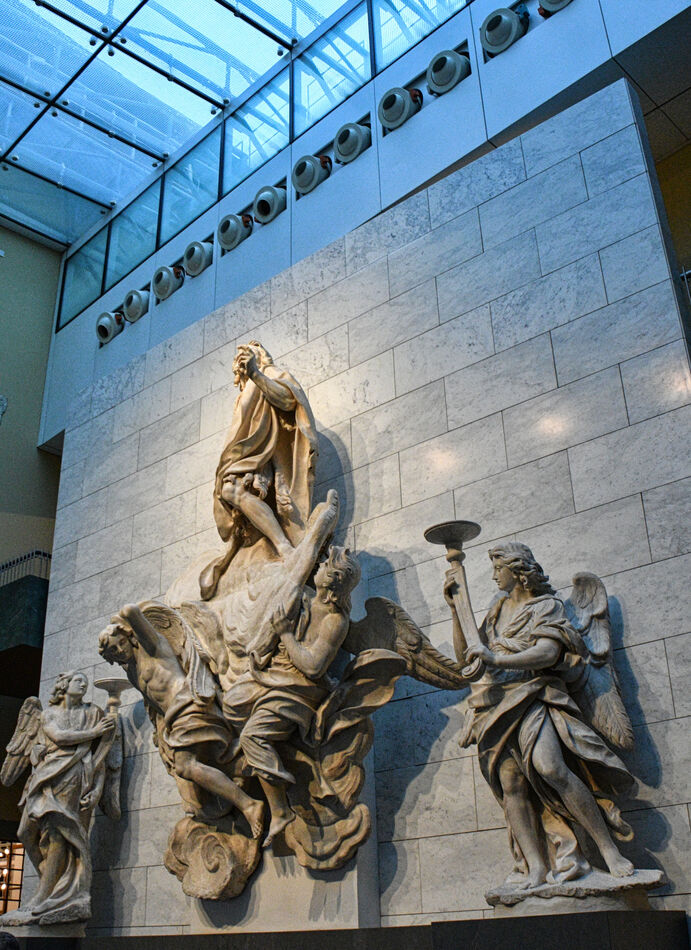
(Download)
Entering Salone del Paradiso. The name of this room comes from the literal recreation of the old cathedral facade
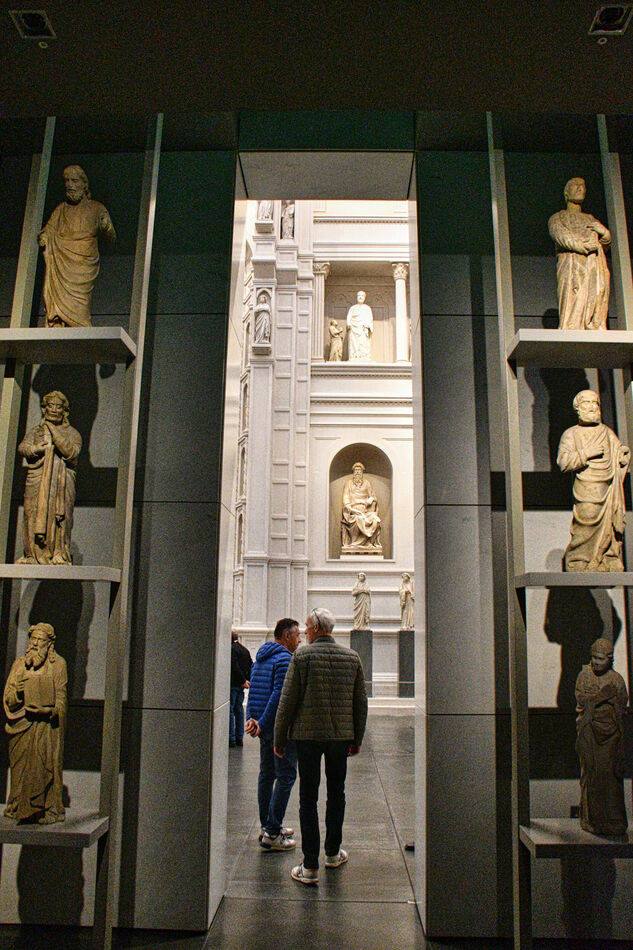
(Download)
The original north doors of the Duomo. According to Vasari Leonardo da Vinci provides himself in sculpture with the bronze figure of St. John. These bronze figures were executed in 1509 by Giovan Francesco Rustici but finished with Leonardo's advice.
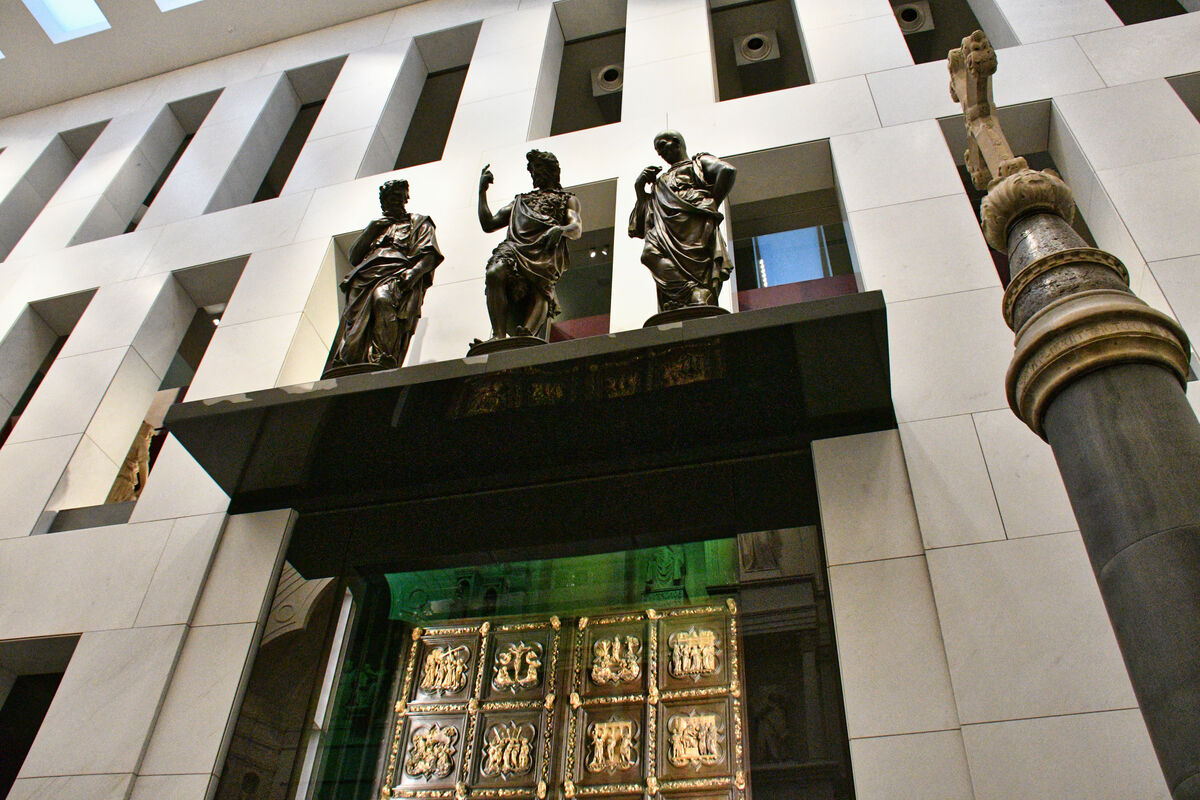
(Download)

(Download)
The Madonna's eyes are made of glass.
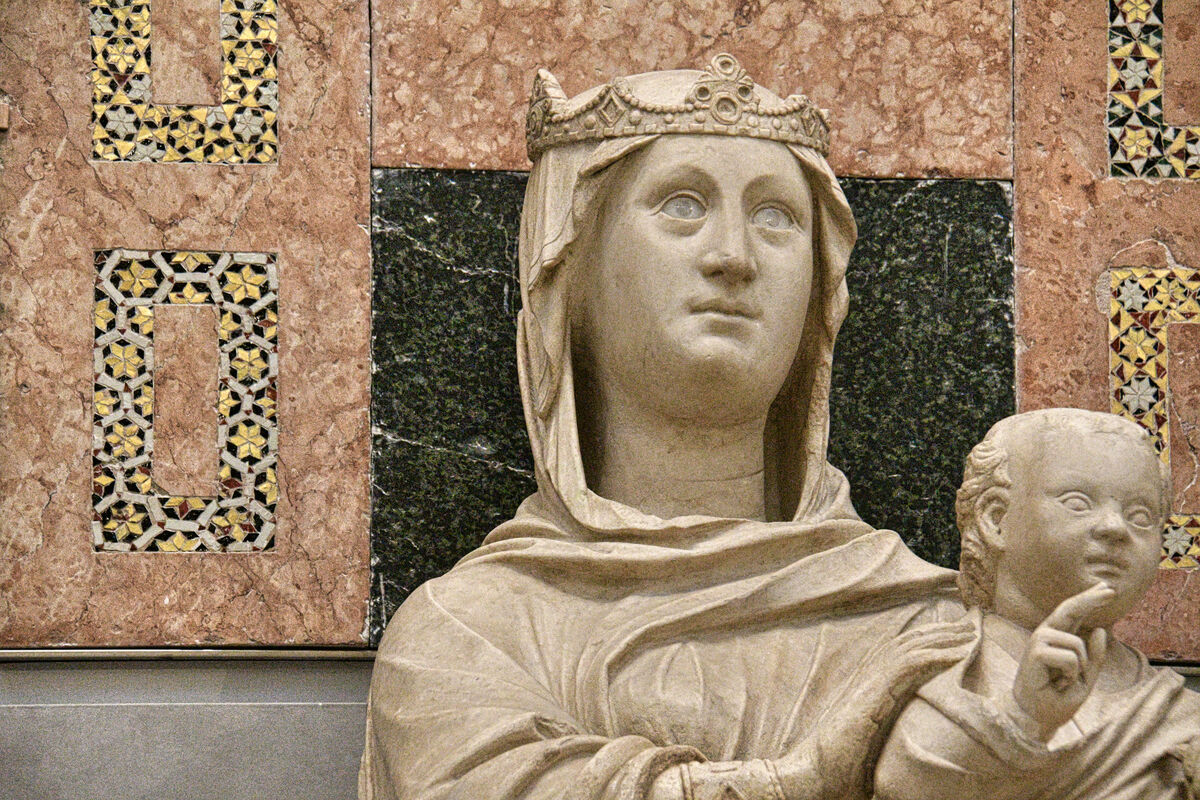
(Download)
Our guide explaining the panels on Ghiberti's original Gates of Paradise from the Baptistery
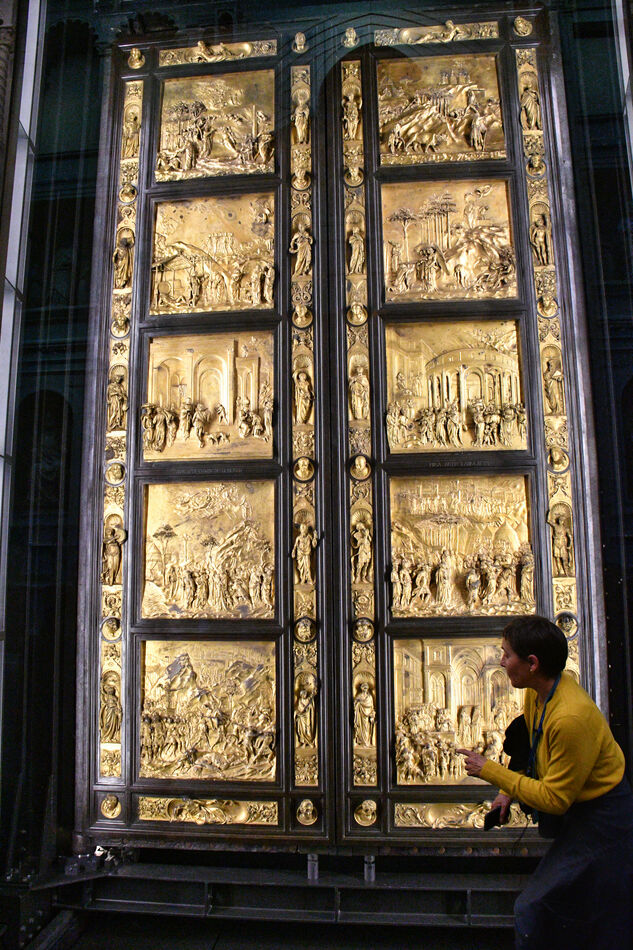
(Download)
David slaying Goliath
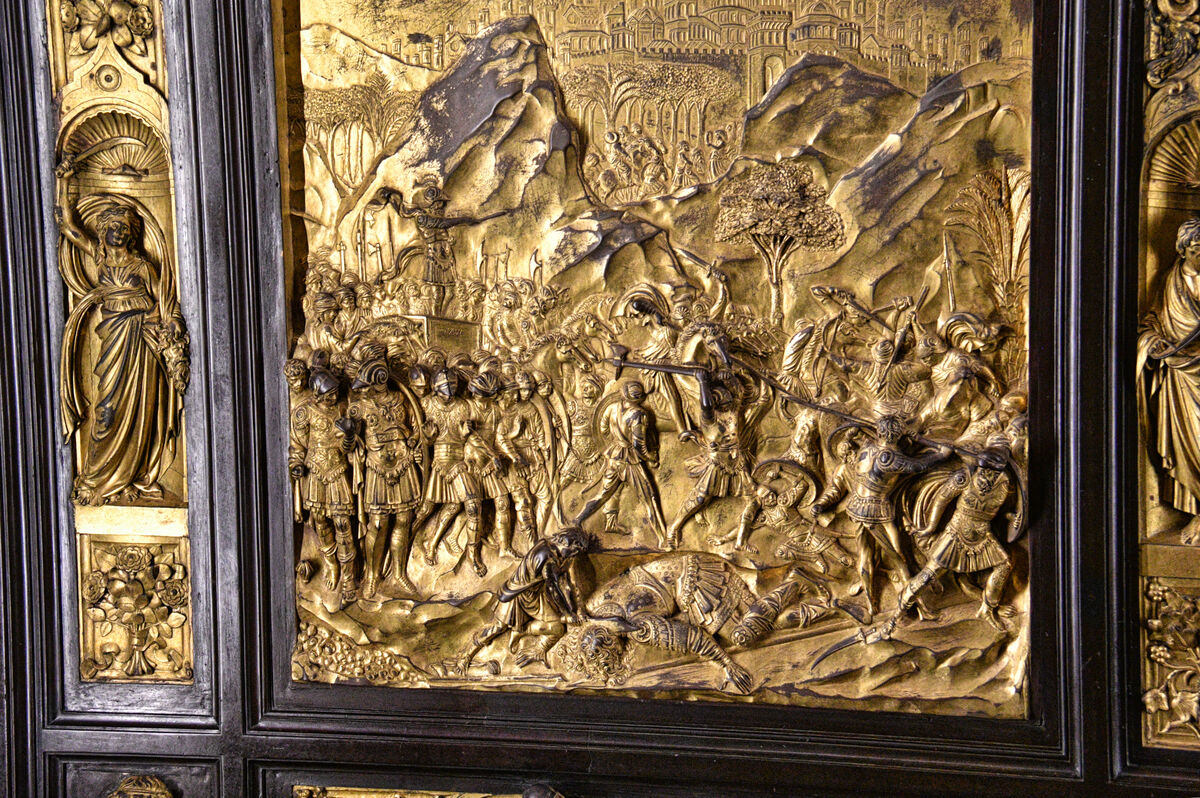
(Download)
Gates of Paradise Lorenzo Ghiberti's bronze doors for the Baptistery are one of the defining pieces of Florentine Renaissance art.
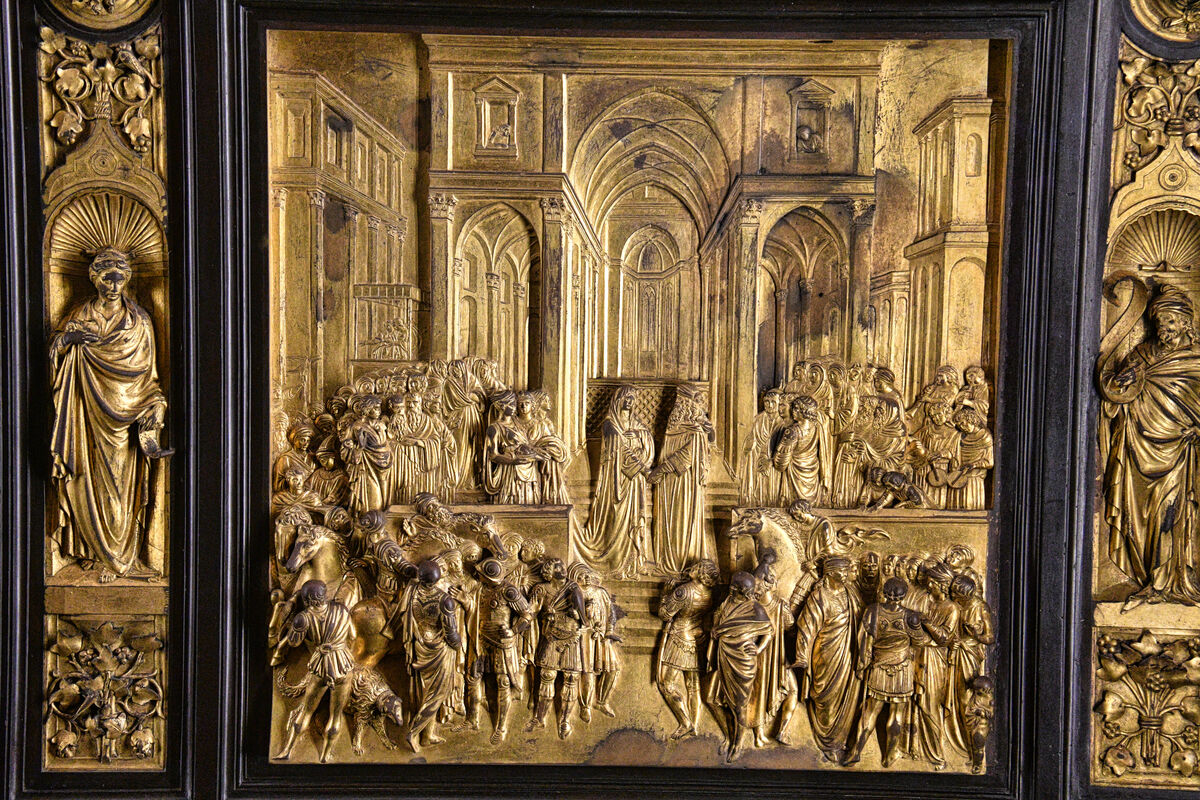
(Download)
mira arte fabricaum = "Wonderful Craftsmanship"
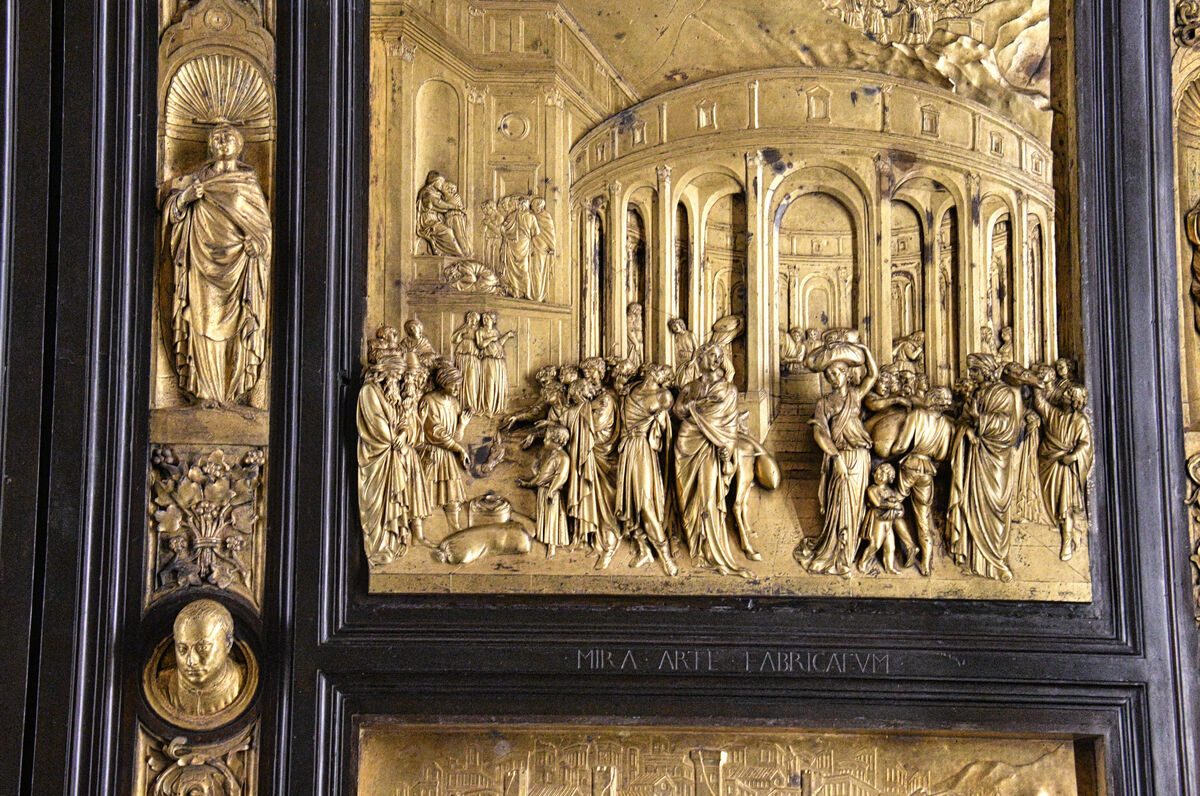
(Download)
Lorenzo Ghiberti's signature
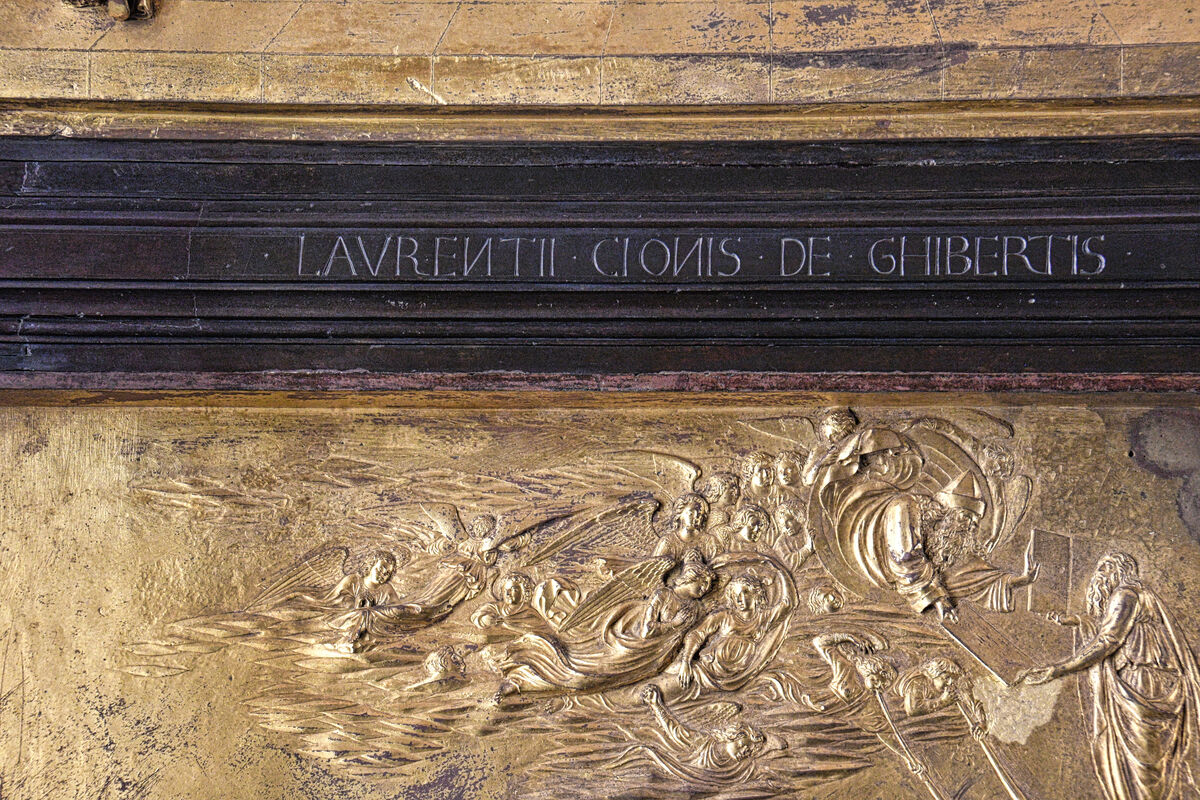
(Download)
Aug 14, 2023 15:43:13 #
Aug 14, 2023 16:36:33 #
Aug 14, 2023 16:44:51 #
Aug 14, 2023 17:06:20 #
Aug 14, 2023 17:39:39 #
Aug 14, 2023 17:40:38 #
Aug 14, 2023 17:41:01 #
Aug 14, 2023 17:50:24 #
srfmhg wrote:
We had a guided tour of this fabulous museum which... (show quote)
Great set Mark! We missed this on our two recent visits to Florence; we'll try to make it on our next visit.
Aug 14, 2023 17:53:08 #
DJphoto wrote:
Great set Mark! We missed this on our two recent visits to Florence; we'll try to make it on our next visit.
Thanks very much Dennis. Well worth it!
Aug 14, 2023 18:19:09 #
Aug 14, 2023 18:20:48 #
kpmac wrote:
A fine set and narrative, Mark.
Thanks very much Ken. Glad you enjoyed both.
Aug 15, 2023 06:13:49 #
Wow, wonderful set, Mark. Loved seeing the sculptures in a modern installation. Beautifully done.
Aug 15, 2023 07:09:45 #
Aug 15, 2023 07:57:40 #
If you want to reply, then register here. Registration is free and your account is created instantly, so you can post right away.









